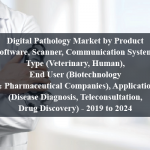OVERVIEW
The Pipette Calibrators Market is projected to grow significantly from USD 215 million in 2024 to an estimated USD 320 million by 2029, reflecting a CAGR of 8.2% during the forecast period. Pipette calibrators are essential tools used to ensure the accuracy and precision of pipettes, which are widely used in laboratories for measuring and transferring liquids. The market encompasses various types of calibrators, including manual and automated systems, as well as services for pipette calibration. The increasing emphasis on accuracy and precision in laboratory work, advancements in calibration technologies, and the growing demand for reliable and efficient laboratory instruments are driving the market’s growth.
The market’s expansion is also supported by rising healthcare and pharmaceutical R&D expenditure, increased regulatory scrutiny on laboratory practices, and the integration of advanced technologies such as automation and digital calibration systems. However, challenges such as high costs of advanced calibrators, stringent regulatory requirements, and the complexity of calibration processes need to be addressed to sustain market growth.
Geographically, North America and Europe dominate the pipette calibrators market due to their advanced laboratory infrastructure, significant investments in research and development, and high adoption rates of innovative calibration technologies. The Asia Pacific region is also expected to witness substantial growth, driven by increasing investments in healthcare and pharmaceutical research, growing awareness of quality laboratory practices, and the expanding laboratory sector.
Market Dynamics
Drivers:
The primary driver of the Pipette Calibrators Market is the increasing emphasis on accuracy and precision in laboratory work. Accurate and precise measurements are crucial in various laboratory applications, including pharmaceutical research, clinical diagnostics, and biotechnology. Pipettes are widely used for measuring and transferring liquids, and their accuracy directly impacts the reliability of experimental results. Pipette calibrators ensure that pipettes function correctly, providing accurate and reproducible measurements. The growing demand for high-quality laboratory instruments and the need to maintain stringent quality control standards are driving the adoption of pipette calibrators. Additionally, advancements in calibration technologies, such as the development of automated and digital calibration systems, are enhancing the efficiency and accuracy of pipette calibration, contributing to market growth.
Another significant driver is the increasing regulatory scrutiny on laboratory practices. Regulatory bodies worldwide have implemented stringent guidelines and standards to ensure the accuracy and reliability of laboratory results. Compliance with these regulations is mandatory for laboratories, and failure to adhere can result in severe penalties. The need to comply with regulatory requirements has driven laboratories to adopt comprehensive calibration solutions. The integration of advanced technologies, such as automation and digital calibration systems, is further enhancing the efficiency and compliance of calibration practices. The rising emphasis on regulatory compliance and the continuous advancements in calibration technologies are driving the growth of the pipette calibrators market.
Key Opportunities
The Pipette Calibrators Market presents numerous opportunities for growth and innovation, particularly in the development and integration of advanced technologies. One prominent opportunity lies in the increasing use of automation and digital calibration systems. Automated calibration systems enhance the efficiency and accuracy of pipette calibration by reducing human error and providing real-time data analysis. The integration of digital technologies with traditional calibration methods is expected to drive market growth by providing more reliable and efficient calibration solutions. Additionally, digital calibration systems can facilitate the development of connected laboratory instruments, improving data management and traceability.
The growing focus on expanding the applications of pipette calibrators presents another lucrative opportunity for the market. While pipette calibrators are commonly used in pharmaceutical and clinical laboratories, there is increasing interest in exploring their potential for other applications, such as environmental testing, food and beverage analysis, and forensic science. Research and development efforts are being conducted to evaluate the safety and efficacy of pipette calibrators for these applications. The expanding applications of pipette calibrators are expected to drive market growth by providing new calibration solutions for a broader range of laboratory settings and needs. Vendors that invest in research and development to explore new applications and improve existing calibration technologies are well-positioned to capitalize on this market trend.
Restraints:
One of the significant restraints in the pipette calibrators market is the high cost of advanced calibration systems. The development and deployment of sophisticated calibration technologies, such as automated and digital systems, require substantial investments in research, equipment, and training. The high upfront costs and ongoing maintenance expenses can be a barrier to adoption, particularly for small and medium-sized laboratories with limited budgets. Additionally, the cost of consumables and replacement parts used in calibration systems further increases the total cost of ownership. To overcome this restraint, vendors need to offer cost-effective solutions and flexible pricing models that cater to the diverse needs of laboratory settings.
Calibration systems and procedures must undergo rigorous validation and approval processes to ensure their accuracy, precision, and reliability. Compliance with regulatory standards, such as ISO 8655 and GLP (Good Laboratory Practice), is essential for market entry and commercialization. The complexity of calibration processes, which involves precise measurements and documentation, further complicates the regulatory landscape. Ensuring compliance with regulatory requirements and maintaining high-quality standards is critical for the successful deployment and operation of pipette calibrators. Vendors must navigate these regulatory challenges and invest in quality assurance and validation processes to meet the stringent requirements of the laboratory industry.
Regional Information:
- North America
North America remains a significant market for pipette calibrators, characterized by advanced laboratory infrastructure, high adoption rates of innovative calibration technologies, and substantial investments in research and development. The region’s strong presence of leading laboratory equipment manufacturers and the high focus on maintaining quality control standards drive market growth. The increasing emphasis on accuracy and precision in laboratory work, driven by the growing prevalence of chronic diseases and the rise in pharmaceutical research, is propelling the adoption of advanced calibration solutions in the region. Furthermore, stringent regulatory requirements and the need for efficient calibration practices encourage laboratories to invest in high-quality calibration systems. However, the high cost of advanced calibration systems and regulatory complexities remain challenges that need to be addressed to fully capitalize on the market potential.
- Europe
Europe leads in the adoption of pipette calibrators, driven by stringent regulatory requirements, significant investments in laboratory infrastructure, and a strong commitment to improving laboratory standards. The region’s focus on innovation and technological advancement fuels the demand for advanced calibration solutions. Countries like Germany, the UK, and France are at the forefront of implementing calibration technologies to enhance laboratory capabilities and ensure compliance with regulatory standards. The European Union’s regulations, such as ISO 8655 and GLP, mandate stringent accuracy and precision measures, further driving market growth. However, economic uncertainties and the complexity of regulatory compliance necessitate strategic planning and risk management to navigate the market landscape effectively.
- Asia Pacific
The Asia Pacific region is expected to witness the highest growth rate in the pipette calibrators market due to rapid digital transformation, increasing investments in healthcare and pharmaceutical research, and the expanding laboratory sector. Countries like China, India, and Japan are investing heavily in advanced calibration solutions to support business growth and enhance laboratory capabilities. The region’s expanding middle class and rising disposable incomes are also contributing to the increasing adoption of pipette calibrators in various laboratory settings such as hospitals, diagnostic laboratories, and research institutes. Governments in the region are implementing initiatives to promote digitalization and support the growth of the laboratory economy, further driving market growth. However, challenges related to regulatory compliance, fluctuating economic conditions, and the need for skilled laboratory professionals necessitate localized strategies and market insights for successful market penetration.
Recent Developments:
In 2023, RADWAG Balances and Scales (Poland) launched the AP-12.1.5Y which is the first automatic device designed to calibrate single- and multi-channel micropipettes with one µg, in accordance with ISO 8655 requirements.
Key market Players:
Frequently Asked Questions
1) What is the projected market value of the Pipette Calibrators Market?
– The Pipette Calibrators Market is expected to reach an estimated value of USD 320 billion in revenue by 2029.
2) What is the estimated CAGR of the Pipette Calibrators Market over the 2024 to 2029 forecast period?
– The CAGR is estimated to be 8.2% for the Pipette Calibrators Market over the 2024 to 2029.
3) Who are the key players in the Pipette Calibrators Market?
4) What are the drivers for the Pipette Calibrators Market?
– The primary drivers for the Pipette Calibrators Market include the increasing emphasis on accuracy and precision in laboratory work, the growing demand for high-quality laboratory instruments, and advancements in calibration technologies. These factors are contributing to the rising demand for pipette calibrators. The integration of automation and digital calibration systems is also driving market growth.
5) What are the restraints and challenges in the Pipette Calibrators Market?
– The high cost of advanced calibration systems and stringent regulatory requirements are significant challenges in the market. These factors can limit the adoption of advanced calibration technologies. Additionally, the complexity of calibration processes and ensuring compliance with regulatory standards poses challenges that need to be addressed to ensure effective and secure calibration operations.
6) What are the key applications and offerings of the Pipette Calibrators Market?
– Pipette calibrators are essential for ensuring the accuracy and precision of pipettes used in various laboratory applications, including pharmaceutical research, clinical diagnostics, and biotechnology. They support advanced calibration techniques, enabling precise measurements and reproducible results while ensuring compliance with regulatory standards. These solutions improve laboratory efficiency by reducing errors and enhancing quality control. Additionally, pipette calibrators are crucial in settings such as hospitals, diagnostic laboratories, research institutes, and environmental testing facilities.
7) Which region is expected to drive the market for the forecast period?
– Asia pacific is expected to have the highest market growth from 2024 to 2029
Why Choose Us?
Insights into Market Trends: Global Market Studies reports provide valuable insights into market trends, including market size, segmentation, growth drivers, and market dynamics. This information helps clients make strategic decisions, such as product development, market positioning, and marketing strategies.
Competitor Analysis: Our reports provide detailed information about competitors, including their market share, product offerings, pricing, and competitive strategies. This data can be used to inform competitive strategies and to identify opportunities for growth and expansion.
Industry Forecasts: Our reports provide industry forecasts, which will inform your business strategies, such as investment decisions, production planning, and workforce planning. These forecasts can help you to prepare for future trends and to take advantage of growth opportunities.
Access to Industry Experts: Our solutions include contributions from industry experts, including analysts, consultants, and subject matter experts. This access to expert insights can be valuable for you to understand the market.
Time and Cost Savings: Our team at Global Market Studies can save you time and reduce the cost of conducting market research by providing comprehensive and up-to-date information in a single report, avoiding the need for additional market research efforts.












